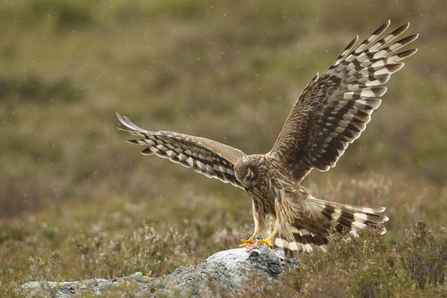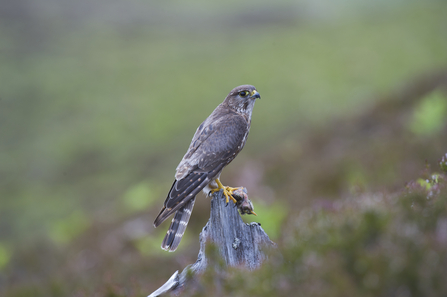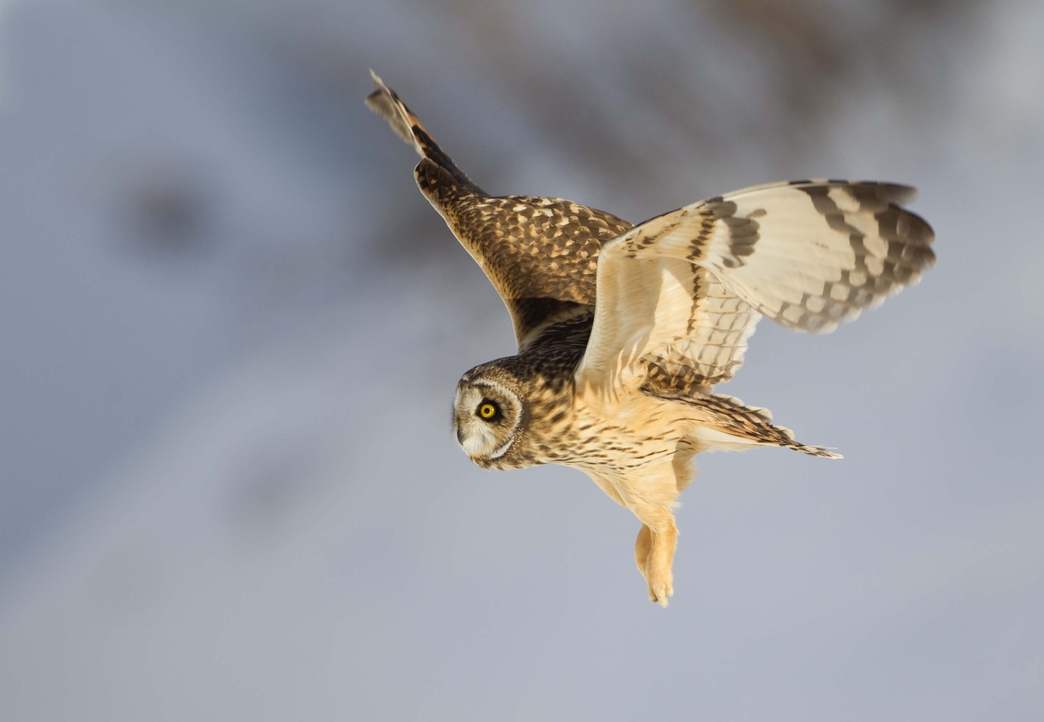Few birds inspire awe as often as birds of prey! Although famously solitary animals, these highly skilled hunters can be witnessed just before dusk in great gatherings and rule the roost when it comes to the food chain.
Many birdwatchers traipse cross-country to see clouds of kites, or to catch a glimpse of an eagle. But as recent news of a white-tailed eagle (the largest UK bird of prey) on Bodmin Moor proves, you don’t have to travel outside of Cornwall to spot one of these iconic birds. Some species can even be seen in parks and gardens, as well as in more urban areas and cities.
You’ll likely find these specialists wherever there is a plentiful supply of food. Their ruthless hunting instincts mean they prey on other birds, mammals, reptiles and even large insects.
When is the best time to see birds of prey in Cornwall?
Winter is the best time of year to encounter birds of prey in Cornwall when our resident species are joined by migrants from within the UK and across Europe, attracted by our relatively mild climate and the prey abundance our rough grassland and moorland habitats offer.Winter is the best time of year to encounter birds of prey in Cornwall… [they’re] attracted by our relatively mild climate and the prey abundance
Some species of raptors and owls also come together to form communal winter roosts at traditional locations. These gatherings present the best chances of good views of these amazing birds. Three species are winter specialists in Cornwall and the West Penwith and Bodmin Moors are favoured areas of each, making it possible to encounter all of them on some days.
What birds of prey can I see in Cornwall?
Hen Harriers

Breeding hen harriers are birds of upland habitats that move to open lowland areas in winter. The adult male is distinctive, especially in flight, with silver-grey upper parts contrasting against a white belly and rump and black wingtips. Females and juveniles share the white rump but are streaked dark brown, with a series of bars on the tail giving them the collective name ‘ringtails’. These usually outnumber males in Cornwall since males tend to move further south and east across Europe, especially during cold snaps.
They are agile and graceful in flight and, like all harriers, quarter the ground on the wing before suddenly dropping on their prey, which consists of rodents and small birds. Sadly, wintering numbers have declined across the UK reflecting their decline as a breeding bird, making our wintering population all the more special.
Merlin

Merlin are the UK’s smallest raptor, the blue-grey male being a little bigger than a blackbird and the dark brown female only slightly larger. Unlike other falcons, merlin have short tails and relatively short wings, which can lead to confusion with our more familiar sparrowhawks.
British-breeding merlin are joined in winter by those from Iceland and can be found in western Britain, where widespread farmland bird declines have had a negative impact on winter survival rates. For their size they are impressive predators and often dynamic on the wing as they pursue small birds, especially meadow pipits, in dramatic chases.
One tactic – attacking almost vertically upwards from the ground – is unique to merlin. For the best chance of an encounter with one of these enigmatic raptors, find a roosting flock of one of their prey species at dusk.
Short eared owls

Short eared owls are scarce breeding birds in upland Britain, but more abundant in winter as they move south and are joined by continental birds, especially via Scandinavia. Short eared owl populations also sometimes experience ‘boom years’ when abundant prey availability increases breeding success. This in turn leads to large winter influxes when they can be found well away from traditional sites.
They are striking birds, with dark-ringed, deep yellow eyes set against a pale face. The eponymous ‘ears’ are in fact short feather tufts above the eyes that are used in breeding displays. They are ‘diurnal’ and can be seen on the wing throughout the day in winter.
Pair formation begins as early as February, so look out for their spectacular ‘wing clapping’ display flight. Sought out over rough grassland and heather, their favourite foodstuff, voles, are also targeted by smaller birds of prey (particularly common kestrels) who will often steal away a potential meal.
Other Birds of Prey
For more quick and easy tips on identifying these masters of the sky, check out the short video below to learn more about Kestrels, Sparrowhawks, Peregrine Falconsand Common Buzzards – all of which can be seen in Cornwall!
Many thanks to Cornwall Wildlife Trust for this interesting article.
16 thoughts on “Birds of prey in Cornwall”